3 Categories & 13 Types of Plumbing Pipes
Many types of plumbing pipes for construction and home, they come in many varieties and types of metal and plastic pipes, the most common plumbing pipes used today are copper, PVC, or ABS. But you must select the plumbing pipes according to its work and suitability as well as prices. The below you will get some information on the most common type of pipes:
Pipes are divided into 3 categories on the basis of raw materials. The first type is metal pipes, such as cast iron pipes, copper pipes, stainless steel pipes, etc. The second category is plastic pipes, such as PB, PP-R, etc. The third category is plastic-composite metal pipe, such as plastic-composite steel pipe, aluminum-plastic composite pipe and so on.
13 Types of Plumbing Pipes [PDF DOWNLOAD]
Ⅰ. Metal Pipes
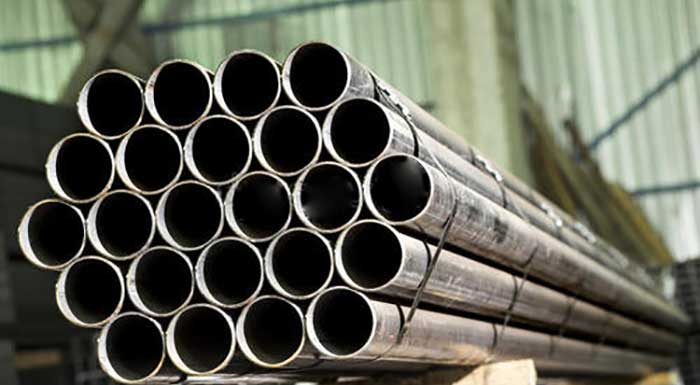
Galvanized Pipe
Galvanized pipe was used several years ago for construction projects, but a large number of rust scales are produced in the pipe with time is used. The rust not only pollutes the sanitary ware, but also contains bacteria that grow on the galvanized pipe inner wall. The rust causes excessive heavy metal content in the water, which seriously endangers human health.
Copper Pipe
Copper pipe is corrosion-resistant and sterile, and it is the first-class product in plumbing pipes. The ways of copper pipe interface include clamp sleeve, welding and self-locking clamp spring, etc.
Copper pipes conduct heat quickly, so the hot water pipes produced by famous copper pipe manufacturers are covered with plastics and foaming agents to prevent heat emission. Another disadvantage of copper pipe is its high price. Welding construction costs are higher, and few households adopt welded copper pipes for decoration.
Stainless Steel Pipe
Stainless steel pipe is a kind of durable pipe material. But its price is high, and the construction technology requirements are relatively high, especially its material strength is relatively hard, so it is very difficult to process on site. Therefore, the probability of being selected in the decoration project is low.
Ⅱ. Plastic Pipes
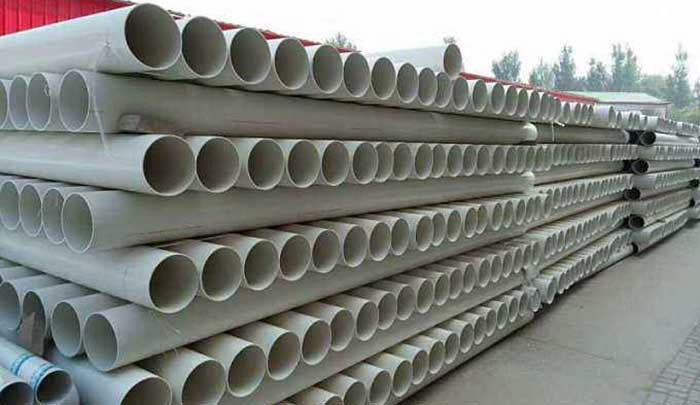
PVC Pipe
PVC pipe is a kind of plastic pipe. The joint of UPVC pipe is usually soldered together with glue. The freeze resistance and heat resistance of PVC pipe are not good, so PVC pipes are seldom used for cold and hot water pipes. PVC pipe is suitable for wire pipes and sewage pipes.
PPR Pipe
As a new type of plumbing pipe material, it can be used not only as a cold pipe, but also as a hot water pipe. Because of its non-toxicity, light weight, pressure resistance and corrosion resistance, it is becoming a popular material.
The interface of PPR pipe adopts hot melting technology, and the pipes are fully fused together. There is no aging and leakage phenomenon, and the PPR pipe will not scale.
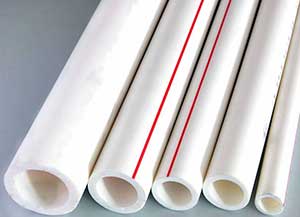
Cons of PPR Pipes:
- The high temperature resistance and pressure resistance are slightly poor, and the long-term working temperature can not exceed 70℃.
- The expansion coefficient is large, the pipe is easy to deform after hot water, affecting the beauty;
- Each length of straight pipe is 4 meters per root, coil is 100-300 meters.
- PPR pipe can not be small angle construction, if the pipeline laying distance is long or corner (small angle) more,more union fittings will be used;
- PPR pipes are cheap but accessories is higher.
PB Pipe
Polybutylene (PB) resin was first synthesized by Professor G. Natta of Italy in 1954. It was industrialized in 1964. In 1965, the Austrian Plastics Association developed the first polybutylene (PB) heating pipeline system. It is exciting that the system is still in operation.
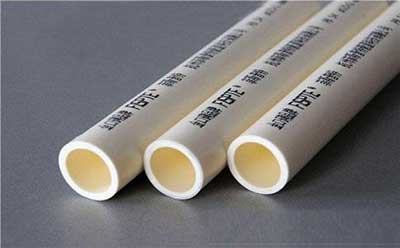
Polybutene (PB) resin is a kind of high molecular polymer composed of carbon and hydrogen. Compared with traditional materials such as metal and ceramics, it is easy to process, easy to recycle and low energy consumption in the whole life cycle. It is a green and environment-friendly material and widely used in the field of hot water conveying system in buildings.
PE-RT Pipe
PE-RT, heat-resistant polyethylene, is a kind of non-crosslinked polyethylene which can be used in hot water pipes. It is a kind of medium density polyethylene produced by special molecular design and synthesis process. It retains the good flexibility, high thermal conductivity and inertia of PE, and makes it more pressure-resistant.
PPH Pipe
PPH pipe is a kind of high density polypropylene pipe, which is mostly used in drainage (sewage) plumbing pipe, waste plumbing pipe, rainwater pipe, air pipe. Its installation method should adopt welding sleeve and docking method as far as possible.
PP-B Pipe
Due to the use of fusion technology in construction. Therefore, it is also commonly known as Hot melt pipe. Its non-toxic, light weight, pressure resistance, corrosion resistance, is becoming a promotional material. Generally speaking, PP-B pipe is not only suitable for cold water pipeline, but also for hot water pipeline, even for pure drinking water pipeline.
PEX Pipe
Pex pipe is a flexible cross-linked polyethylene plastic piping, its minimal maintenance, and fast installation process make it the best pipe for water distribution inside a building.
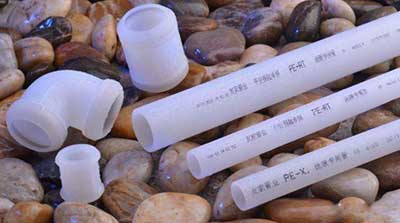
Cons of PEX Pipes:
- It has good pressure resistance and wide range of temperature resistance: – 70 – 95℃ (short time 110℃);
- It can resist acid and alkali corrosion and can be used for transporting a variety of chemicals;
- High temperature resistance, excellent low temperature performance, light weight;
- The inner and outer walls of the tube are smooth, with little resistance and no scaling;
- Clean, pollution-free, with good thermal insulation performance;
- It has a long service life, at 70℃, working pressure < 0.8 MPa, and a continuous service life of 50 years.
Pros of PEX Pipe:
- Non-hot-melt connections, which limit their applications in HVAC and water supply.
Ⅲ. Composite Pipes
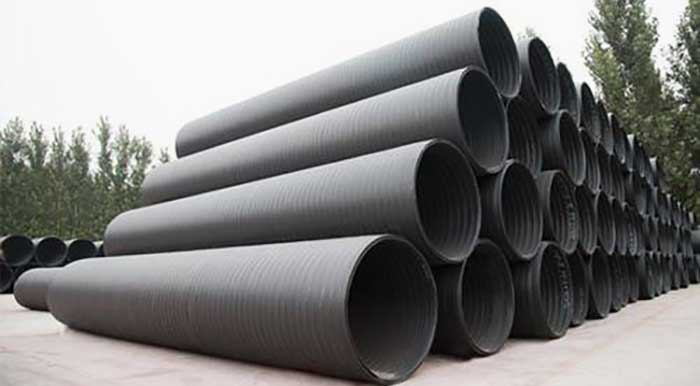
Aluminum-Plastic Composite Pipe
It is the earliest water supply pipe to replace cast iron pipe. Its basic composition should be five layers, namely plastic, hot melt adhesive, aluminium alloy, hot melt adhesive, plastic and so on.
Aluminum-plastic composite pipes have good thermal insulation performance, the inner and outer walls are not easy to corrode, because the inner walls are smooth, the resistance to fluid is very small, and because they can bend freely, the installation and construction are convenient. As a water supply pipeline, the aluminium-plastic composite pipe has sufficient strength.
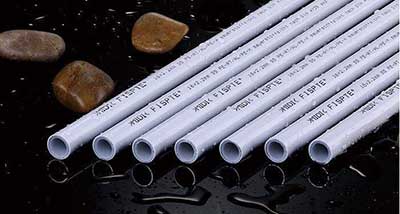
Steel-Plastic Composite Pipe
Steel-plastic composite pipe products are based on seamless steel pipe and welded steel pipe. The inner wall is coated with high adhesion, anti-corrosion, food-grade sanitary polyethylene powder coating or epoxy resin coating.
Bimetallic Composite Pipe
Lined with stainless steel composite pipe, the product is based on galvanized steel pipe, lined with thin-walled stainless steel. The bimetallic composite pipe can not only satisfy the advantages of stainless steel in safety, sanitation, health and durability, but also eliminate the pollution of plastic pipe.
The price is much less than that of copper and stainless steel pipes. It can also be installed and constructed safely, conveniently and reliably, and has high bearing capacity. It is a new environmental protection, green energy-saving product.
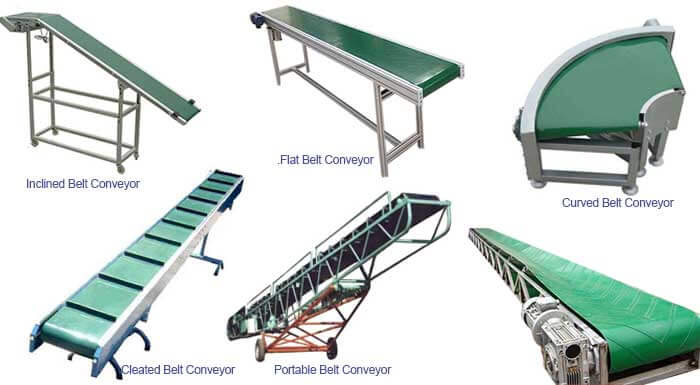 10 Belt Conveyor Types & 5 Types of Conveyor Belt Materials
10 Belt Conveyor Types & 5 Types of Conveyor Belt Materials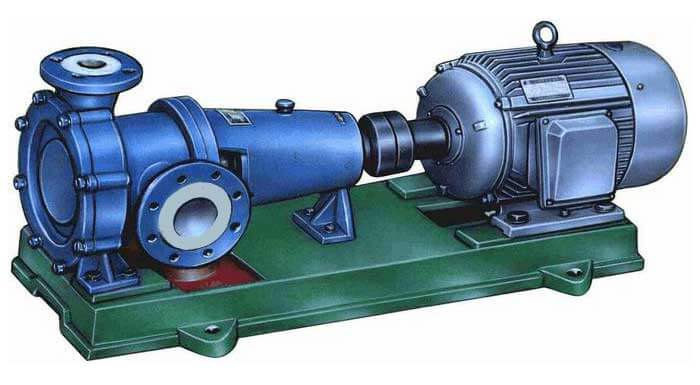 How To Select The Feed Pump of Filter Press
How To Select The Feed Pump of Filter Press



